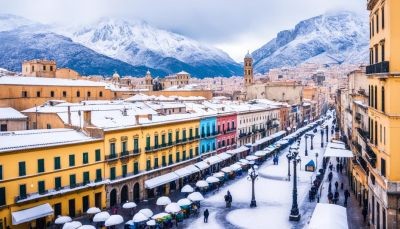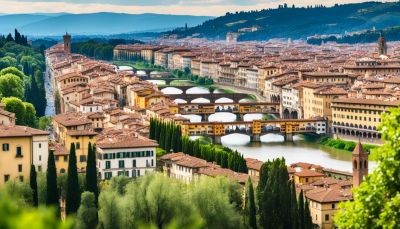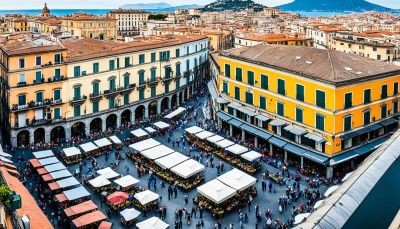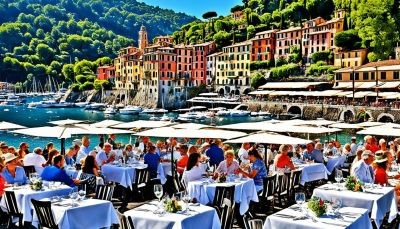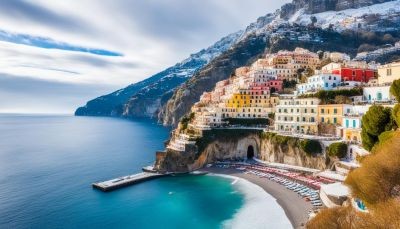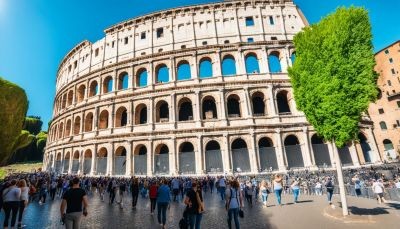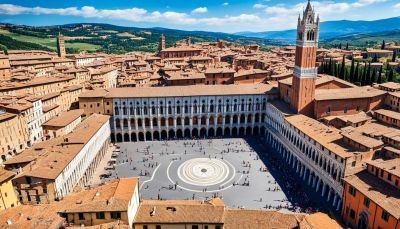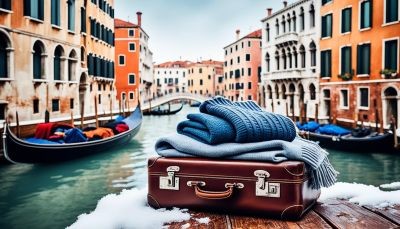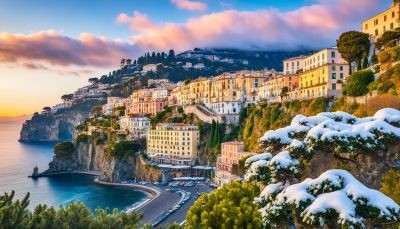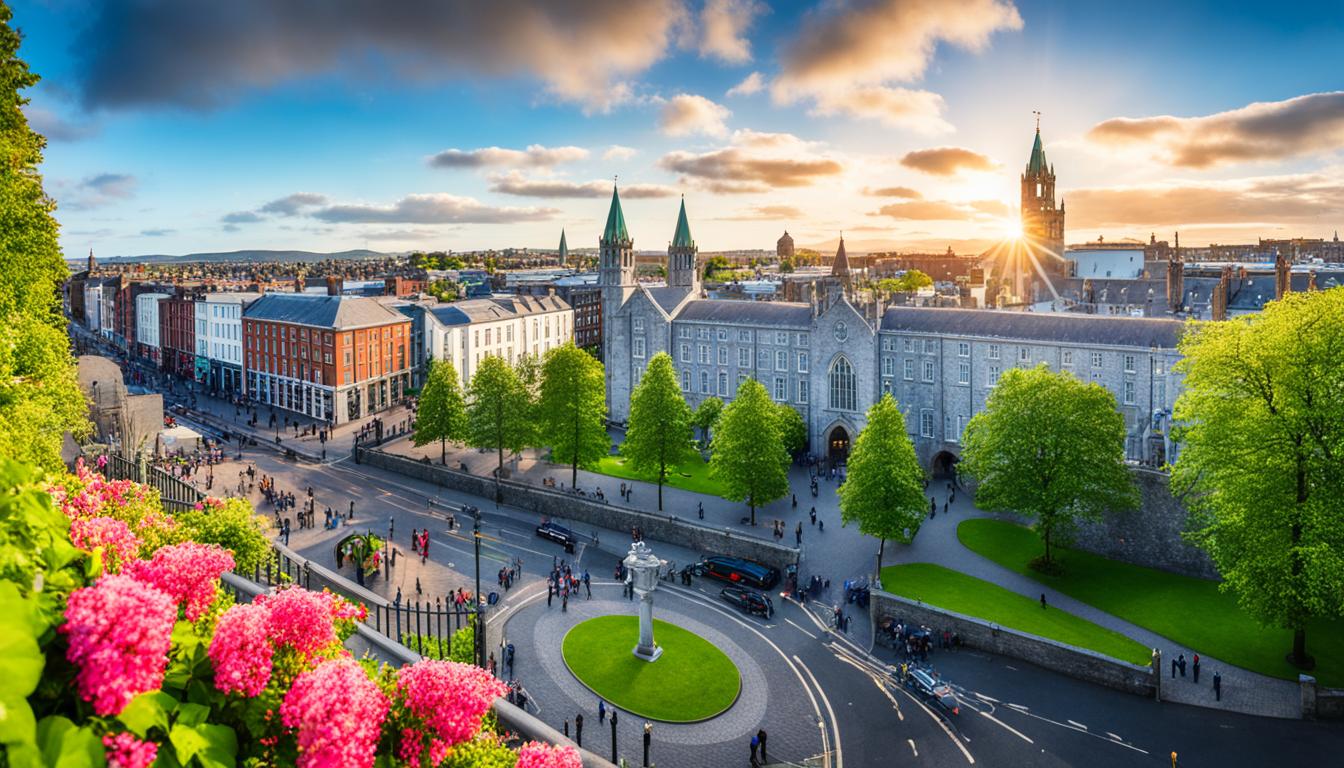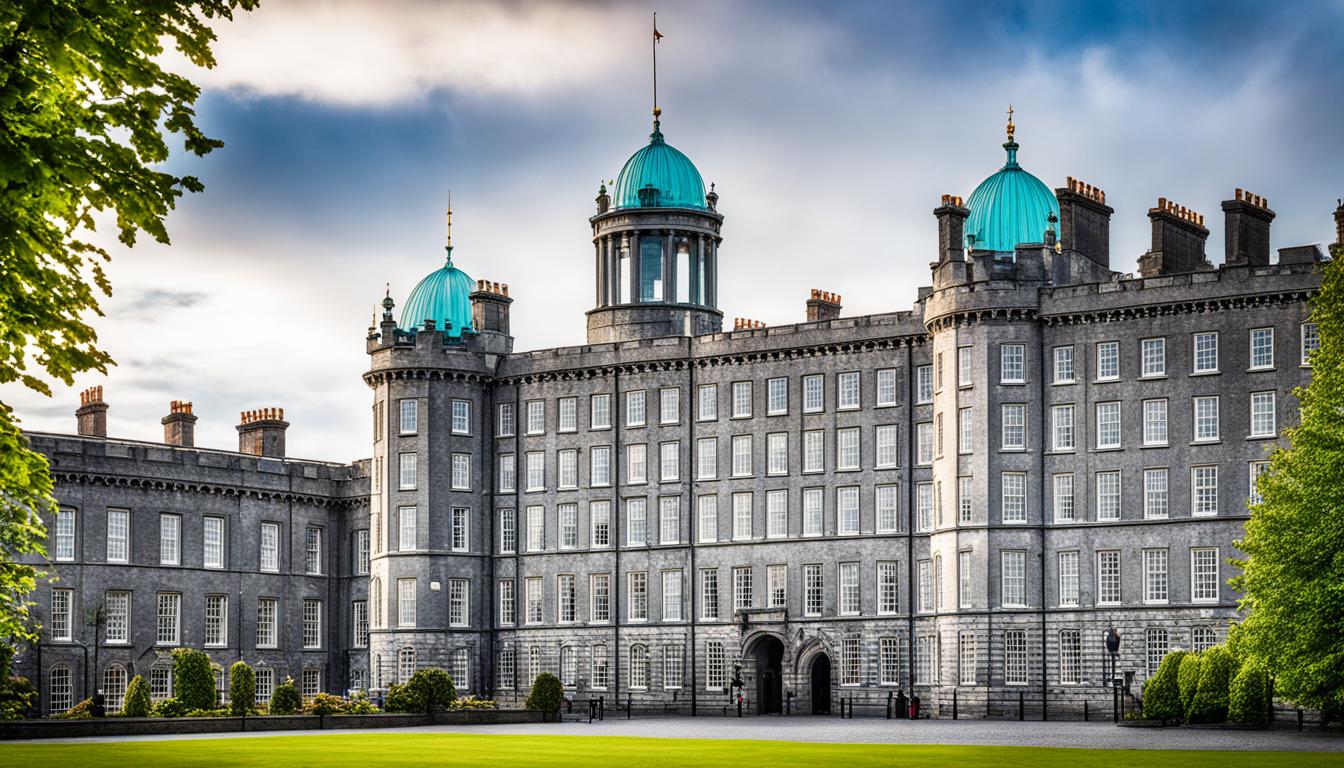Are you dreaming of a sun-soaked vacation in the heart of the Mediterranean? Look no further than Palermo, the vibrant capital of Sicily. But when is the best time to visit this enchanting Italian city? Discover the secrets of Palermo's charming climate and find the perfect months to plan your weather-savvy trip.
Sicily is the biggest island in the Mediterranean, making it one of Italy's 20 provinces, and it's a kind of geography. It goes from arid, dry coastal lands to fertile, lush inland. Across the board, you'll find a Mediterranean climate which means mild, sometimes wet winters and hot, dry summers. In spots away from the coast, you'll notice more four-season climates, with cold winters and clear changing seasons in spring and fall. Mount Etna, rising almost 11,000 feet, usually has snow through winter.
Sicily is perfect for all sorts of travel lovers. From history buffs to those into its mix of cultures or even just its beaches, there’s something for everyone. The best time to visit really depends on what you want to see and do.
Key Takeaways
- Sicily has a varied geography and climate, ranging from Mediterranean to four-season patterns
- Winters in Palermo are mild, while inland areas see colder temperatures and snow on Mount Etna
- Summers are hot and dry, making them popular but crowded peak tourist season
- Spring and fall shoulder seasons offer milder weather and fewer crowds
- There's no "bad" time to visit Palermo, but the best months depend on your travel preferences
Charming Sicilian Climate
Planning a trip to Sicily means knowing about its different climate and weather patterns. Sicily is in the middle of the Mediterranean. It has various geographic features. These range from dry coasts to lush interiors. These differences create a cool but attractive climate.Mediterranean Weather Patterns
Sicily usually has a mild, wet winter and a hot, dry summer. Coastal areas are a bit warmer and have less temperature change than the inland. This Mediterranean climate makes it great for visiting all year round.Varied Geography and Altitudes
The inland part has a different climate, more like four seasons. Winter there is colder, and spring and fall are distinct. Mount Etna can get snowy in winter. It's a top spot for skiing and nature-loving people.Summer in Palermo
Palermo is the lively capital of Sicily, especially in summer. During July and August, it shines with its peak tourist season. People from all over come to enjoy the beaches and take part in the city's cultural events. But, prices for things like hotels and flights are higher, so it's smart to plan ahead.Hottest Months: July and August
In Palermo, July and August are the warmest months. The temperatures can reach very high levels. This is great for sun lovers at the beaches. But, if you want to explore the city's sights, it can get too hot. So, make sure to plan your day wisely.What to Pack for Summer
For a trip to Palermo in summer, light clothes are key. Choose items that are easy to wash by hand. Clothes made of performance materials, like t-shirts, and shorts will keep you cool. For nights out, you might need something a bit nicer. And, don't forget the accessories like a hat, sunglasses, and sunscreen. Remember to pack a swimsuit for beach days.Spring in Palermo
In the spring, Palermo and the rest of Sicily burst into life. The weather changes from cool to warm with temperatures ranging from low 60s in March to mid-70s in May. This season brings blooming gardens and is perfect for exploring and enjoying outdoor fun.Mild Temperatures and Blooming Landscapes
In April, Palermo's surroundings turn into a colorful painting. Wildflowers, citrus and almond trees, and cherry blossoms start blooming. The rain, which can be 1 to 3 inches a month, helps these beautiful landscapes grow. Although the sea might be too cold for a swim, it's great for walks and visiting Sicily's historical places.Ideal for Sightseeing and Outdoor Activities
Spring in Palermo is ideal for visiting ancient sites before the summer heat. You can explore old ruins, medieval towns, and beautiful architecture comfortably. It’s also perfect for activities like hiking and cycling through the blooming scenery.For your spring trip to Palermo, pack light clothes like pants, and both long- and short-sleeved shirts. A jacket and a sweater are good to have, too. Don’t forget comfortable, sturdy shoes for lots of walking. With the right stuff in your bag, you can enjoy Palermo in the spring to the fullest.
Autumn in Palermo
Autumn in Palermo, Sicily, is perfect for travelers. The weather starts to cool down and the crowds thin out. This creates a lovely season in the Mediterranean.Fall begins a bit cooler than summer, slowly becoming cooler and rainier. By mid-September, swimming can still happen, but the beaches are less crowded.
Shoulder Season with Fewer Crowds
September and October are great for sightseeing in Palermo and Sicily. With fewer tourists, you can explore the cities and cultural spots calmly. November remains quiet, but the weather is cooler and rainier, with less daylight.Harvest and Food Festivals
In autumn, Palermo comes alive with harvest and food festivals. Events like the Couscous Festival and the Sagra dell'Arancino (Arancini Festival) are highlights. They let you experience the local culture and enjoy delicious food.The Festa Della Vendammia, near Mount Etna, celebrates winemaking. It's a must-see for visitors.
For autumn in Palermo, pack light layers, an umbrella, and a rain jacket. This ensures you're ready to enjoy the city and its surroundings in any weather.
Winter in Palermo
In Palermo, inland areas can get very cold, especially at night. However, it's rare for coastal cities to fall below the 50s F in winter. Mount Etna is an exception, often snowy and perfect for skiers. Overall, winter across Sicily is mostly chilly and damp, but with some sunny breaks.While it may be a bit wet, visiting Sicily in winter has its perks. You'll have the museums and archaeological sites mostly to yourself. Plus, you get to experience the real local life, away from the crowds. Make sure to pack clothes for layering, along with an umbrella.
Palermo's Vibrant Cultural Events
Palermo and Sicily are famous for their many cultural festivals and traditions all year. There are old Greek plays and fun carnivals. The city is full of different cultures for visitors to explore.Summer Festivals and Celebrations
The summer months in Palermo have lots of cultural events. You can watch old Greek plays. They perform these plays in an ancient theater in Syracuse. Another fun event is the Swordfish Festival in Aci Trezza.This event is about the local fishing industry. The Taormina Film Fest is a big draw for movie fans. It's one of Italy's oldest film festivals. Also in summer, Palermo has big parties to honor local saints.
Spring and Autumn Festivities
In spring and autumn, Palermo keeps celebrating. The Infiorata Festival in Noto is in May. They make art on the streets with flower petals. It's a beautiful display.Easter is a big deal in Sicily too. There are lots of special traditions. In the autumn, there's the Couscous Festival in San Vito Lo Capo. Also, the island's food gets the spotlight in events like the Arancini Festival.
Winter Traditions and Carnivals
Winter doesn't slow down the cultural events. Christmas and New Year's bring special celebrations. There are also big pre-lenten Carnevale parades in cities across Sicily.These events show off Sicily's long-held traditions. They bring the community together in a fun, lively way.
Palermo, Italy: Best Months for a Weather-Savvy Trip
The best times to visit Palermo and all of Sicily are spring and autumn. This is when the weather is mild and the crowds are thin. September is a great month to go if you enjoy the beach and like exploring the island's cities and countryside. Winters are also good if you want to see fewer tourists and don't mind layers of clothing.Summer is perfect for beach lovers but comes with large crowds. It’s a hot and busy time on Sicily’s beaches.
Planning Your Trip
Thinking of visiting Palermo and Sicily? Try going in spring or autumn to miss the big peak season crowds and hot summer weather. September is perfect. You can hit the beach and check out the cities and countryside.The winters are cool and damp, but still a good time to go. No matter when you visit, what you pack is super important. For summer, think light and breezy. Spring and autumn, go for layers. In winter, bring your warmest, waterproof clothes. Don't forget to look up any neat festivals or events happening when you're there. They can really add to your trip.
Exploring Palermo's Surroundings
Palermo sits right along the Palermo coast. This means it's perfect for day trips to see natural beauty and lovely towns. From charming coastal towns to amazing day trips, there's a lot to find beyond Palermo's busy streets.Day Trips from Palermo
The historic town of Cefalù is a favorite day trip from Palermo. It's just an hour away. This medieval town has a grand cathedral, beautiful hiking spots, and a pleasant seaside walk. Don't forget to visit Erice, a hilltown with breathtaking views of the coastline and the sea.Nearby Coastal Towns and Beaches
Close to Palermo, you'll find the charming coastal towns of Mondello and Scopello. Mondello is known for its pretty beaches and elegant villas. Scopello has an old village and cliffs above the sea. These spots offer a perfect day out for sun and relaxation.The Palermo area is full of natural and cultural treasures. You can visit places like Mount Etna's volcanic slopes and the lovely Ustica Island. There's no end to the places you can explore on day trips and scenic drives.
Accommodation and Travel Tips
When getting ready for Palermo, finding great accommodations matters a lot. This is especially true in high season. Book your stay early and stay open to changing your dates. This way, you can find cheaper places to stay in Palermo. Hotels, vacation homes, or a cozy B&B - it's good to check them all out ahead of time.Finding the Best Deals
Comparing prices on different websites can save you money. It's best to visit in spring or fall. Deals on places to stay might be better if they're not right in the city. With smart planning, enjoying Palermo within a budget is totally possible.Transportation Options
Moving in and around Palermo is pretty easy. Trains offer a nice way to see the scenery while avoiding traffic. They connect the city with other towns. If you'd like more freedom, renting a car is an option. Yet, the city’s streets are narrow and often crowded.When it comes to public transportation, be ready for possible delays. A little extra time in your plans can take care of any unexpected hitches.
Conclusion
Palermo and Sicily are full of cultural, historical, and natural wonders for visitors to enjoy. It's key to know about the island's climate to pick the best time to go. This depends on what you like, such as sunny beaches, cultural events, or avoiding crowds.Each season has its benefits. Spring and fall bring cooler weather and fewer people, plus many local celebrations. Summer is great for the beach, while winter is perfect for exploring with less tourist noise.
Planning well and bringing the right clothes make the trip more fun and comfortable. The area's varied scenery, deep history, and lively culture will surely amaze anyone who visits.
FAQ
What is the climate like in Palermo and Sicily?
Sicily, the biggest island in the Mediterranean, has places from dry coastal areas to lush interiors. The climate is mostly Mediterranean. This means winters are mild and wet, while summers are hot and dry. Inland, you'll see more varied weather, including snow on Mount Etna in winter.
What are the best times of year to visit Palermo and Sicily?
The best times are spring and autumn, avoiding the summer's crowds. September is perfect for beach and city exploration. Winter offers fewer crowds, but prepare for cold and wet days.
What is the summer like in Palermo?
Summer is Sicily's peak season, especially July and August. It can be very hot, perfect for the beach but cities might feel too crowded. Wear clothes that are light and easy to clean.
What is spring like in Palermo?
In Sicily, spring is a transition season. Temperatures rise from March to May. It’s the time when flowers and trees are in bloom. This is perfect for outdoor activities and seeing ancient sites.
What is autumn like in Palermo?
Fall starts a bit cooler than summer but gets colder and rainier. You can swim until mid-September. September and October are great for enjoying sights rather than the beach.
What is winter like in Palermo?
Winter in Palermo is mild, rarely going below the low 50s F. Mount Etna gets snow. Expect cooler, wet weather but enjoy fewer crowds in touristic spots.
What cultural events and festivals happen in Palermo throughout the year?
Palermo and Sicily offer many cultural events. In summer, you can enjoy Greek plays and local feasts. Spring has flower festivals in Noto and Easter events. Autumn and winter celebrate food, Christmas, New Year's, and Carnevale with parades.
